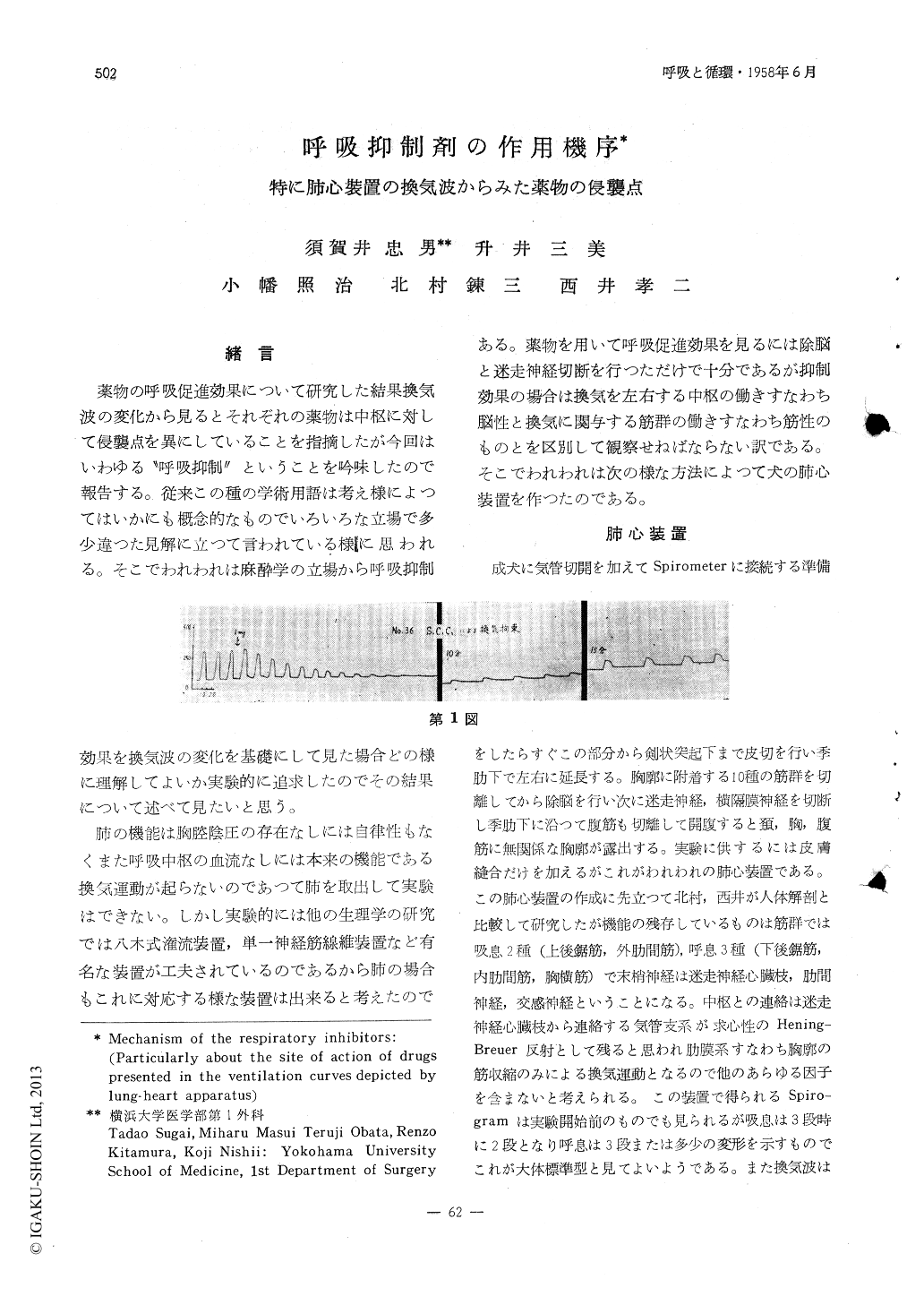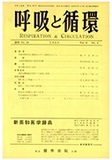Japanese
English
- 有料閲覧
- Abstract 文献概要
- 1ページ目 Look Inside
緒言
薬物の呼吸促進効果について研究した結果換気波の変化から見るとそれぞれの薬物は中枢に対して侵襲点を異にしていることを指摘したが今回はいわゆる"呼吸抑制"ということを吟味したので報告する。従来この種の学術用語は考え様によつてはいかにも概念的なものでいろいろな立場で多少違つた見解に立つて言われている様に思われる。そこでわれわれは麻酔学の立場から呼吸抑制効果を換気波の変化を基礎にして見た場合どの様に理解してよいか実験的に追求したのでその結果について述べて見たいと思う。
肺の機能は胸腔陰圧の存在なしには自律性もなくまた呼吸中枢の血流なしには本来の機能である換気運動が起らないのであつて肺を取出して実験はできない。しかし実験的には他の生理単の研究では八木式潅流装置,単一神経筋線維装置など有名な装置が工夫されているのであるから肺の場合もこれに対応する様な装置は出来ると考えたのである。薬物を用いて呼吸促進効果を見るには除脳と迷走神経切断を行つただけで十分であるが抑制効果の場合は換気を左右する中枢の働きすなわち脳性と換気に関与する筋群の働きすなわち筋性のものとを区別して観察せねばならない訳である。そこでわれわれは次の様な方法によつて犬の肺心装置を作つたのである。
A dog lung-heart apparatus was made to facilitate our study from the view point of ane-sthegiology, on the respiratory inhibiting effect of drugs, in which study, those effects are expressed by the changes in the ventilation curves.
This apparatus was made by completion of following surgical procedures: Resection of all of 10 muscle groups on the thoracic cage, decerebration, vagotomy and phrenicotomy, resection of abdominal muscles and laparotomy, so the cardiac branch of the vagal nerve remains as the only route communicating between the respiratory center and the lung-heart system.
In case of the muscular ventilatory arrest caused by administration of S.C.C. and d-Tc, spiro-gram reveals that when the inhibiting effect appears, the ventilatory standstill is preceded by the fasciculation.
In the cerebral ventilatory arrest resulting from the use of cyclopropane, morphine and barbiturates, however, the ventilation gradually decreases in its capacity and ends in a ven-tilatory standstill. When N2O is employed, there is no decrease in ventilation, but marked hypoxia is followed by the ventilatory cessation, and in case of ether, convulsion occurs before ventilatory arrest and sometimes shows gasping type ventilation.
As long as the ventilatory arrest stays in the phase of incomplete paralysis, resuscitation is effective although each method has its indication according to the cause of the arrest in individual case, such as the administration of antagonists with the controlled respiration for the muscular ventilatory arrest, or such as the application of positive pressure artificial re-spiration to exhaust the inhalated gas, with the administration of respiratory accelerants for the rescure of cerebral ventilatory standstill.

Copyright © 1958, Igaku-Shoin Ltd. All rights reserved.


